Introduction to Foot Injury Prevention and Performance Enhancement
Athletes rely heavily on their feet and ankles for mobility, balance, and power. Preventing injuries in these areas not only safeguards long-term health but also maximizes athletic potential. This guide explores common foot and ankle injuries, preventive strategies, exercise routines, footwear selection, nutrition, rehabilitation, and tailored advice for varying environments to help athletes perform at their best while minimizing injury risk.
Understanding Common Foot and Ankle Injuries in Athletes
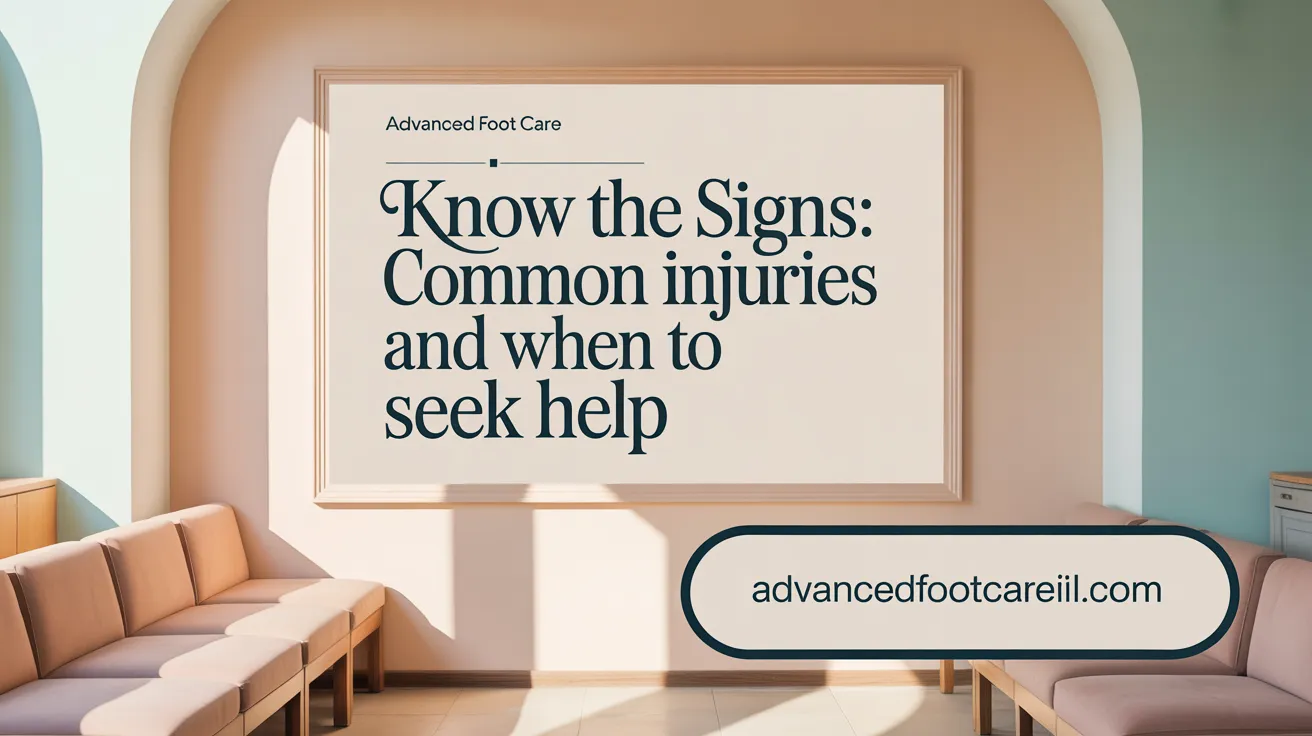 Athletes frequently experience various foot and ankle injuries due to the physical demands of sports, including twisting, impact, and overuse. Common injuries encompass ankle sprains, Achilles tendinitis or tears, plantar fasciitis, turf toe, stress fractures, and osteochondral injuries of the talus.
Athletes frequently experience various foot and ankle injuries due to the physical demands of sports, including twisting, impact, and overuse. Common injuries encompass ankle sprains, Achilles tendinitis or tears, plantar fasciitis, turf toe, stress fractures, and osteochondral injuries of the talus.
Symptoms of these injuries usually include pain, swelling, bruising, and difficulty moving or bearing weight. For instance, ankle sprains often result from twisting the ankle inward, leading to ligament tears noticeable by swelling and instability. Achilles injuries can manifest as pain or stiffness in the back of the ankle, especially after activity, often caused by overuse or improper footwear. Plantar fasciitis presents as sharp heel pain, particularly in the morning, due to inflammation of the plantar fascia. Turf toe involves pain and swelling at the big toe joint, usually from hyperextension during sports on artificial turf.
These injuries may occur suddenly after trauma or develop gradually from repetitive stress and overuse. Proper treatment varies depending on severity but typically involves RICE therapy—rest, ice, compression, and elevation, and may include physical therapy, custom orthotics, or surgical intervention for severe cases. Early assessment and intervention are crucial to prevent worsening conditions, restore function, and reduce recovery time. Consulting healthcare professionals promptly ensures appropriate management and a safe return to athletic activity.
Proven Strategies for Preventing Foot and Ankle Injuries
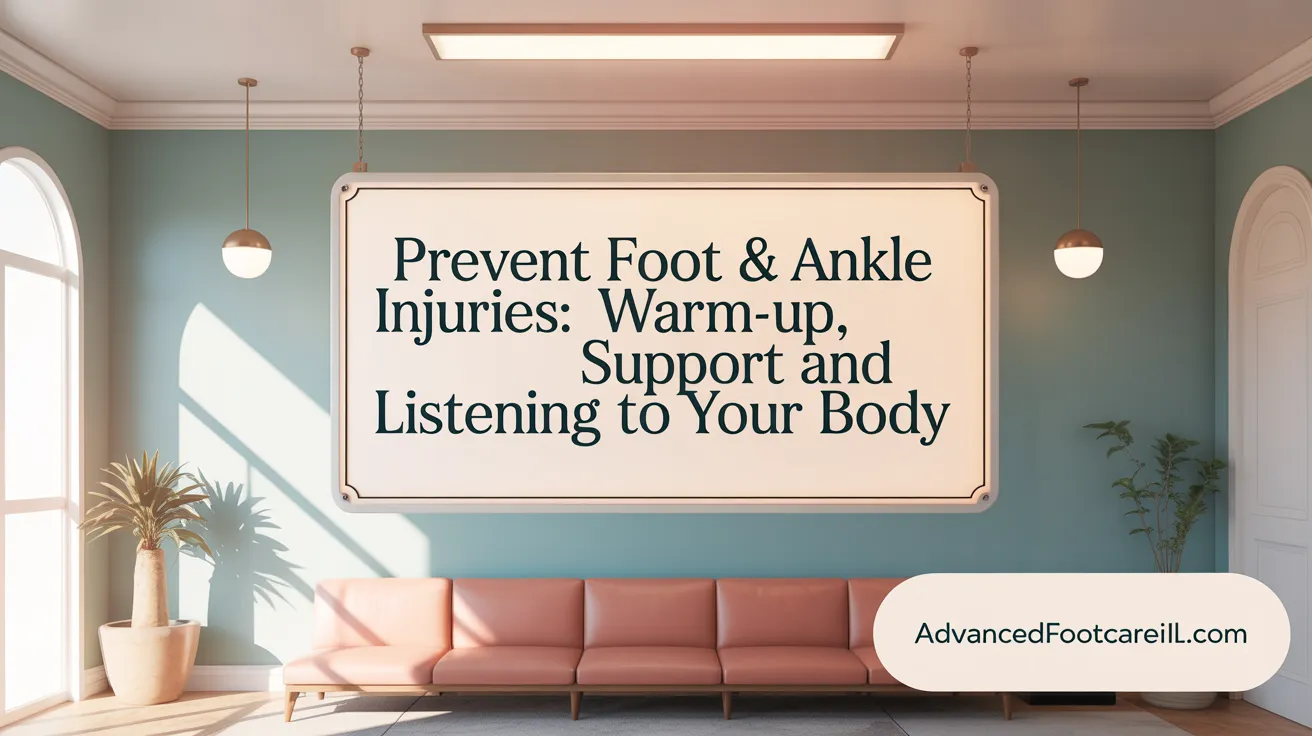
Warm-up and stretching routines
Starting any athletic activity with a proper warm-up helps prepare the muscles and joints, reducing the risk of injury. Light jogging combined with dynamic stretching exercises, such as ankle circles and toe presses, increases blood flow and improves flexibility. Incorporating specific foot and ankle stretches before sports is vital for enhancing range of motion and preventing strains.
Footwear selection and maintenance
Choosing the right shoes for your sport and foot type is essential. Sport-specific shoes with adequate support and cushioning help absorb impact and stabilize the foot during movement. It’s important to get fitted by specialists and regularly inspect shoes for wear. Replacing athletic shoes every six months or after 300-500 miles prevents loss of support, which could lead to injuries.
Muscle strengthening and neuromuscular training
Strengthening exercises for the feet and ankles are proven to enhance stability and proprioception. Activities like ankle raises, balance exercises on one leg, and toe curls improve muscle control and joint support. Regularly engaging in these exercises helps athletes develop better coordination and reduces the likelihood of sprains and overuse injuries. For detailed exercises see Foot and ankle exercises for athletes and Foot strengthening exercises for runners.
Use of braces and taping
External supports such as ankle braces or taping provide additional stability, especially for athletes with previous ankle injuries. These supports help maintain proper joint alignment and alert athletes to joint movements, decreasing the chances of recurrent sprains or strains. Guidance is available in Rehabilitation of Ankle and Foot Injuries in Athletes and Foot and ankle injury prevention tips.
Listening to body signals and sport-specific prevention
Paying attention to pain, discomfort, or fatigue during activity is crucial. Resting when needed and modifying activity can prevent minor issues from worsening. Following sport-specific injury prevention protocols, including proper technique and gradual progression of training intensity, is vital for long-term injury-free performance.
Incorporating these strategies, supported by evidence and expert recommendations, creates a comprehensive prevention program that significantly reduces the risk of foot and ankle injuries among athletes.
Foot and Ankle Strengthening and Mobility for Performance
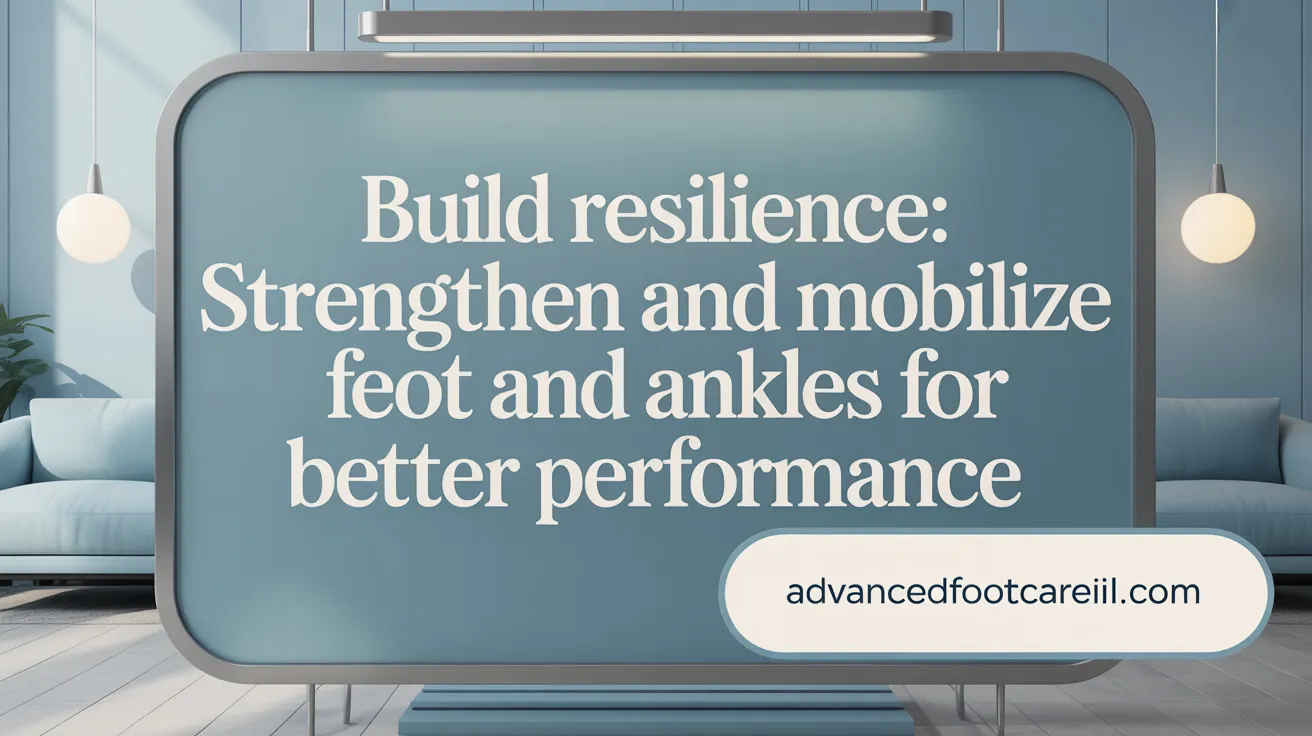
How can exercise routines strengthen the feet and ankles to enhance injury prevention and athletic performance?
Targeted exercises play a crucial role in building resilience in the foot and ankle complex. Strengthening the intrinsic muscles of the feet, such as toe curls, splay exercises, and short foot drills, improves arch support and overall stability (Exercises to Improve Foot Strength, Foot Strengthening Exercises for Runners, Training the Foot to Improve Performance). Additionally, strengthening the surrounding ankle muscles—including calf raises, resisted dorsiflexion, and eversion/inversion exercises—contributes to better joint support and reduces sprain risk (Foot and Ankle Conditioning Program, Foot and Ankle Exercises for Athletes).
Balance and coordination drills are vital components of a comprehensive training program. Single-leg stands, wobble board exercises, and perturbation training help enhance proprioception, which is the body's ability to sense joint position. Improving proprioception through these drills can significantly lower the risk of ankle rolling and other dynamic injuries (Foot and Ankle Conditioning Program, Preventing Foot and Ankle Injuries).
Flexibility and stretching routines are equally important. Heel cord stretches, Achilles stretches, and ankle mobilizations restore joint range of motion, alleviate tightness, and prevent stiffness, which is essential for optimal movement mechanics. Incorporating dynamic stretching before activity and static stretching afterward ensures muscles and tendons remain elastic and less prone to injury (Stretching Exercises for Feet and Calves, Proper Warm-Up and Cool-Down Routines, Preventing Sports Injuries).
Progressive training combining strength, balance, and flexibility exercises over a span of 4 to 6 weeks yields the best results. Starting with low-impact, non-weight-bearing activities and gradually advancing to functional, weight-bearing exercises maintains safety and promotes effective adaptation (Foot and Ankle Conditioning Program, Preventing Foot and Ankle Injuries Tips).
Injury recovery and prevention are supported when exercises are tailored and increased gradually under professional supervision. This approach not only enhances injury resilience but also improves athletic performance by refining foot mechanics, augmenting force transfer, and supporting dynamic movements needed in sports such as running, jumping, and cutting (Training the Foot to Improve Performance, Foot and Ankle Injuries in Athletes, Foot Care for Athletes).
Selecting Proper Footwear and Equipment to Minimize Injury Risk
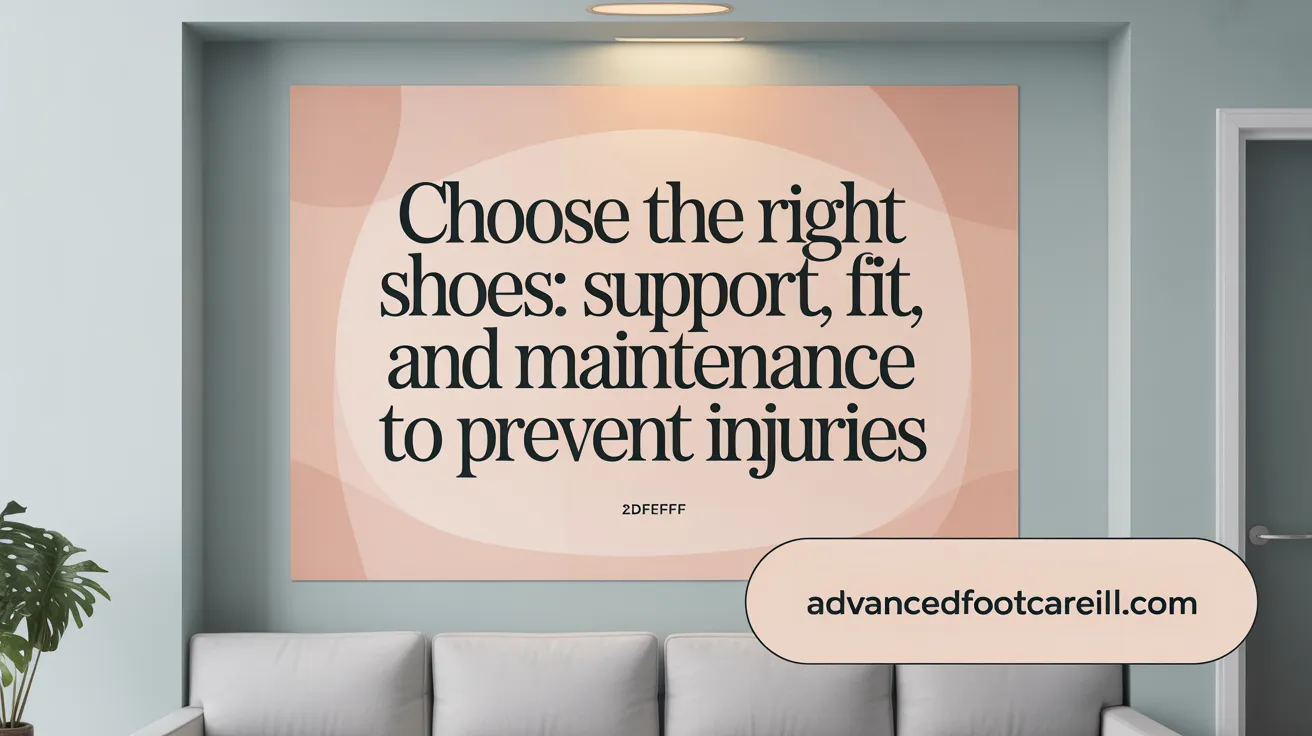 The foundation of injury prevention in athletes lies in choosing the right footwear and protective gear tailored to their specific sport and individual needs. Proper shoes should fit snugly without pinching, providing adequate support for the arches, cushioning, and stability. This helps maintain correct biomechanics, reducing strain on muscles, tendons, and ligaments.
The foundation of injury prevention in athletes lies in choosing the right footwear and protective gear tailored to their specific sport and individual needs. Proper shoes should fit snugly without pinching, providing adequate support for the arches, cushioning, and stability. This helps maintain correct biomechanics, reducing strain on muscles, tendons, and ligaments.
Different sports demand different footwear features. For example, runners benefit from shoes with good shock absorption and flexible soles, while court players need lateral stability and support to prevent ankle injuries. Wearing sport-specific shoes enhances performance and injury resilience (Selecting the Right Shoes for Sports, Proper Protective Equipment in Sports).
Replacing athletic shoes regularly is essential as worn-out shoes lose their cushioning and support. For runners, a common guideline is to change shoes every 300 to 500 miles or roughly every six months if used frequently (When to Replace Running Shoes, Footwear Replacement Tips). Continuing to use degraded shoes increases the risk of stress fractures, plantar fasciitis, and other injuries (Common sports foot injuries, Preventing sports foot injuries).
Protective equipment like helmets, knee pads, ankle braces, and orthotics also play crucial roles. They support the body’s natural mechanisms, prevent excessive movement, and absorb impact forces during activity. For athletes with biomechanical issues, custom orthotics can correct gait abnormalities and distribute pressure evenly (Use of ankle tape and braces, Orthotics for foot pain, Proper sports equipment for safety).
Environmental considerations influence footwear choices. Playing surfaces—such as turf, concrete, or trail—may require specialized shoes with different traction, grip, and sole cushioning (Training on appropriate surfaces, Avoiding uneven running surfaces). Wet or uneven surfaces also demand footwear with reliable slip resistance to prevent falls (Footwear for different surfaces).
In addition to gear, proper warm-up routines and correct techniques are vital in reducing injury risks (Warm-up and stretching tips, Learning Proper Sports Techniques). When combined, these strategies create a comprehensive approach to athlete safety, maximizing performance while minimizing harm.
Supporting Foot Health Through Nutrition, Hygiene, and Rehabilitation
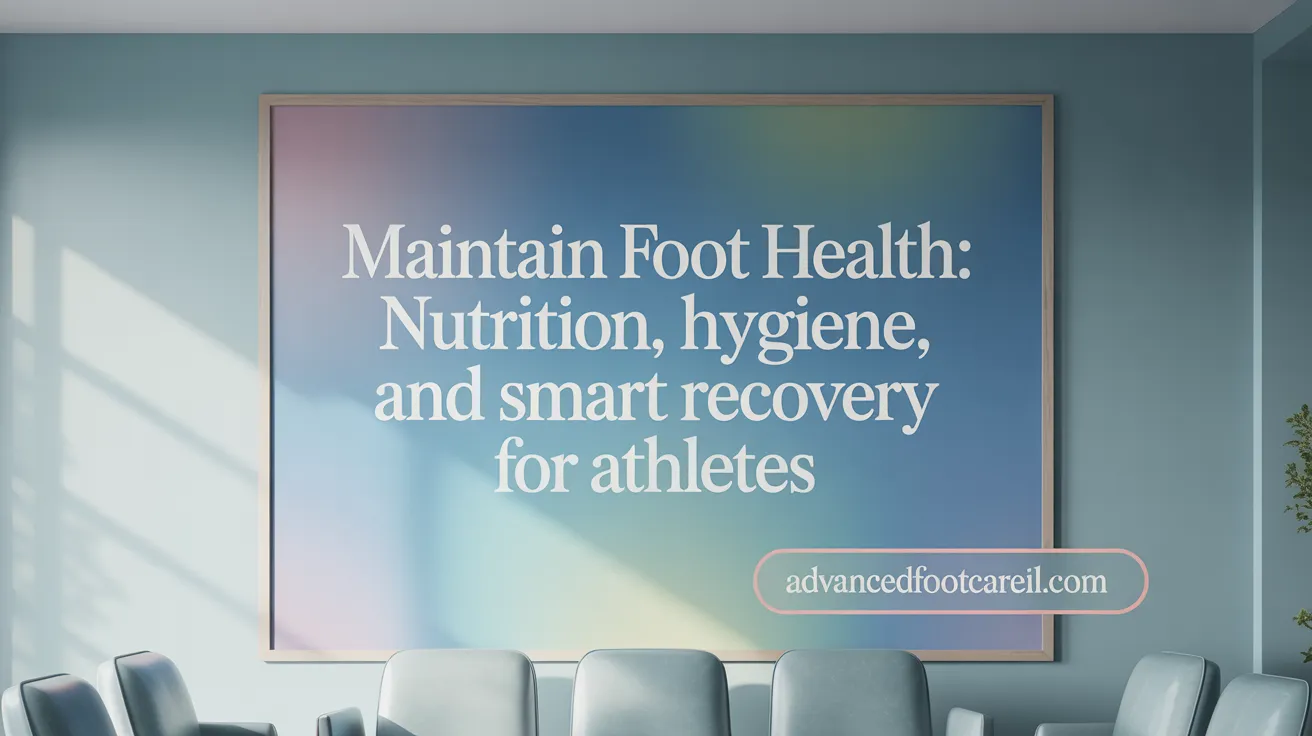
How do nutrition and hydration support foot health and athletic performance?
Adequate nutrition and hydration are fundamental for maintaining healthy feet and optimizing athletic output. Essential nutrients such as calcium and vitamin D contribute to strong bones, reducing fracture risk. High-quality proteins and omega-3 fatty acids aid in tissue repair and help decrease inflammation. Proper hydration ensures joint lubrication, prevents muscle cramps, and enhances overall muscular and joint function. Tailoring fluid and electrolyte intake to individual needs sustains endurance during prolonged activities and speeds recovery afterward, as detailed in Proper nutrition for athletic performance.
What are best practices for maintaining foot mobility, flexibility, and hygiene among athletes?
Preserving foot mobility involves regular exercises such as ankle circles, toe stretches, and calf stretches that enhance flexibility and reduce injury risk, as described in Foot and ankle exercises for athletes. Good foot hygiene practices include washing feet daily with soap and water, thoroughly drying, especially between toes, and wearing moisture-wicking socks to prevent fungal infections, recommended in Washing and Drying Feet and Foot Hygiene Best Practices. Selecting breathable shoes and avoiding shared or wet footwear further supports foot health, complemented by Proper Foot Care Tips for Athletes. Routine foot assessments and early consultation with podiatrists help detect and address issues promptly, preventing chronic conditions, explained in Visiting a Podiatrist for Foot Pain.
When should athletes recognize injury warning signs and seek professional medical help?
Athletes must be vigilant and seek medical care if experiencing severe pain, swelling, or joint deformity. Inability to bear weight, persistent bruising, numbness, or tingling are signs of potentially serious injury requiring prompt attention. Sudden popping sounds or open wounds also indicate urgent conditions. Recognizing these symptoms early helps prevent complications, supports proper healing, and minimizes downtime. This is highlighted in When to see a foot specialist and Signs to see a foot injury doctor. Further details about injury symptoms and urgent care are in Foot and ankle injuries in athletes.
What rehabilitation and recovery strategies are effective following foot and ankle injuries?
Effective rehabilitation focuses on gradually restoring joint mobility, muscle strength, balance, and neuromuscular control through targeted exercises, as explained in Rehabilitation of Ankle and Foot Injuries in Athletes. Using supports like braces or taping can stabilize the joint and prevent further injury during recovery, based on guidance from Ankle taping and bracing and Using braces or tape for ankle support. A phased approach starting from rest and progressing to functional activities ensures a safe return to sport, supported by Foot and ankle conditioning program. Correcting biomechanical issues with orthotics or therapy enhances recovery and minimizes re-injury risk, as described in The Athlete’s Guide to Preventing Common Foot & Ankle Injuries. Consistent adherence to prescribed rehab exercises and proper technique optimizes healing outcomes.
How can athletes adapt injury prevention measures during different weather conditions and environments?
Athletes should modify their warm-up routines and hydration strategies based on weather conditions; for example, longer warm-ups and increased hydration are necessary in hot climates, explained in Tips for preventing foot and ankle injuries and Preventing Sports Injuries. Footwear with appropriate traction helps prevent slips on various surfaces, whether muddy trails or icy pavements, as outlined in Choosing proper athletic shoes and Proper footwear for injury prevention. Protective clothing and gear guard against environmental risks like cold exposure or sunburn, covered in Using Proper Sports Equipment. Acclimatizing gradually to environmental changes and adjusting training intensity according to surface and weather conditions reduce injury risks related to heat, cold, or uneven terrain, supported by guidance in Injury prevention in sports.
Conclusion: Prioritizing Foot Health for Lifelong Athletic Success
Maintaining strong, flexible, and healthy feet is fundamental for athletes aiming to prevent injuries and optimize performance. Through proper footwear selection, dedicated warm-up and strengthening routines, attention to foot hygiene, appropriate nutrition, and timely rehabilitation, athletes can sustain foot health and enhance their athletic capabilities. Awareness of injury signs and adapting prevention strategies to environmental conditions further safeguard against setbacks. Ultimately, integrating these comprehensive approaches supports both immediate athletic success and long-term mobility, empowering athletes to achieve their best.
